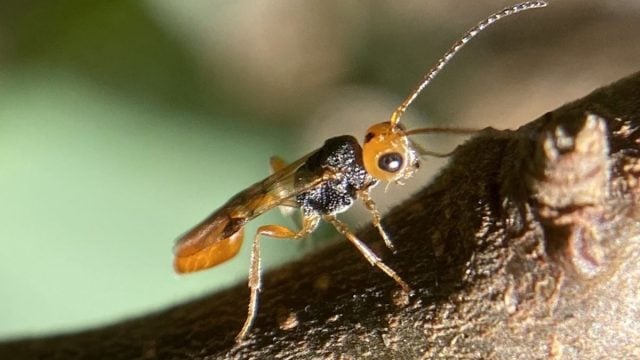Brought to you by Cosmos Magazine and The Echo

A mathematician, an ecologist and a taxonomist go into lockdown in Brisbane suburbia… it might sound like the start of a joke, but it’s a lockdown project which became an academic research paper.
Three housemates – mathematician Dr Matt Holden, ecologist Dr Andrew Rogers and taxonomist Dr Russell Yong started cataloguing the animals, fungi and plants in March 2022. Despite only having 400 square metres of suburbia to investigate, in just one year they discovered 1,150 unique species in their yard in Annerley, Brisbane.
‘Andrew, Russell and I had talked about it over many house dinners. But we never really had the time until we got locked down in the house during COVID,’ University of Queensland mathematician Dr Matt Holden told Cosmos.
‘We discovered probably 200 species in the first week or two. So, we were like, ‘Oh, wow, we don’t think people realise how many species are in their in their yards at all’.’
One year after starting the project, the three housemates had discovered in 1,150 unique species including 436 moth and butterfly, 56 different spiders, eight reptiles and 56 birds.
‘We deployed a range of survey methods, including weekly sweep netting of the back and front yard, weekly beating of foliage on a hedge, irregular soil/compost/leaf-litter sampling and opportunistic transects (spotting organisms during daily routines, and watching for animals from vantage points),” they wrote in a paper published in the journal Ecology.
‘We also routinely checked ordinary outdoor and indoor lights at least once per night. For a species to count in this survey, it had to be present in or on the property bounds, or identifiable from the property.”
Although the housemates think anyone could find a similar number of critters, they did have a bit of an advantage – an untended lawn.
‘With the three trees on the lot, and no pesticides used we noticed quite a few cool insects around here and there, so we knew we’d find a lot,” Holden says.
‘The reason why the biodiversity is so high in our yard is because of the amount of effort we’ve put into searching. If everyone put this amount of effort into searching their own properties, the number of species we would discover in Brisbane would be extraordinarily higher than what it currently is.”
The project led to three new species being added to the Atlas of Living Australia – the largest leading biodiversity database, which is used for ecology research.
The three animals were a mosquito, a sandfly, and an invasive flatworm, Platydemus manokwari, which is responsible for native snail population declines around the world.
The vast majority of the species being found were moths and flies, so the three researchers had to spend plenty of time on citizen scientist pages like iNaturalist to confirm which species type they’d uncovered.
“What’s really helpful is all the experts who are on iNaturalist who helps you ID things,” Holden says.
“We also send photos to the Queensland Museum. I think if I ever get another message that says ‘you’re going to have to dissect the genitalia to ID that on species level’ I’ll go crazy.”
There were other species that were much easier to identify found on the 430 square metre lot too – tawny frogmouths (Podargus strigoides) laughing kookaburras (Dacelo novaeguineae), rainbow lorikeets (Trichoglossus moluccanus).
“I often jokingly say that we observed more than double the number of animal species publicised in Lamington National Park’s official species list,” says Holden, who in his day job uses maths to help policymakers improve environmental decisions.
“Of course, that is a bit cheeky. The forest would have way more species than our house. The reason their list is so much smaller than ours is that there is a huge bias against insects in government species lists.
“The cool thing about our study is that we showed urban landscapes have far more species than anyone would have expected.”




People will still believe that human activity has extincted most species, then complain we can’t get rid of fire ants, bee mites, cane toads, rabbits, foxes……
You can’t fight religious beliefs.